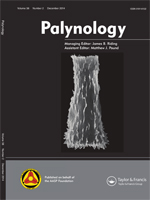Since the beginning of honey production, certain honey types have been favored because they taste better, are better for cooking or do not rapidly crystallize. Thus, they are preferred over others, are in high demand and are sold at higher prices. The pollen of 37 honey samples from East Texas was examined. Pollen was recovered from the honey by using an alcohol-dilution method. Overall, 431 taxa identified into 61 families, 104 genera and 85 species were found in the samples. The number of taxa per sample varied from 17–52. Half of the samples contained 31–40 taxa, indicating a high diversity in botanical origin. Three taxa were found in >50% of the samples and are the most important: Berchemia scandens, Salix nigra and Toxicodendron radicans. Berchemia scandens was found in 89% of the samples and was a predominant type in three samples and an important secondary type in 14. Both Salix nigra and Toxicodendron radicans pollen occurred in 83% of the samples and neither occurred as a predominant or secondary type. Three samples were Berchemia scandens unifloral honey. By examining the pollen in honey, it can determined which habitats honeybees visit, which plants honeybees use as food, if they visit row crops and orchards and their role in pollination. In order to differentiate honey from the United States of America (USA) from honey produced in other countries, the honey from each state must be analyzed. Only by analyzing the pollen in the honey of the USA can it be reliably differentiated from foreign honey that is being sold as produced in the USA.
How to translate text using browser tools
1 December 2014
Pollen Studies of East Texas Honey
Gretchen D. Jones,
Vaughn M. Bryant
ACCESS THE FULL ARTICLE
It is not available for individual sale.
This article is only available to subscribers.
It is not available for individual sale.
It is not available for individual sale.

Palynology
Vol. 38 • No. 2
December 2014
Vol. 38 • No. 2
December 2014
east Texas
honey
melissopalynology
pollen





